As i blogged the other day, the Bolzano segment of Manifesta 7 exhibition is located in a disused aluminium factory by the Dolomites mountains. The show is called The Rest of Now and words fail me to express how consistent, intelligent and thought-provoking it is.
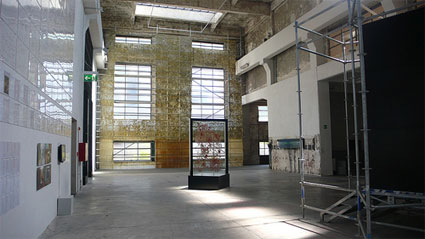
The curators, Jeebesh Bagchi, Monica Narula & Shuddhabrata Sengupta from Raqs Media Collective, took as a point of departure for their reflection the abandoned industrial site and the questions its ‘after-life’ raises, they then enlarged the scope of the discussion: What gets left behind when everything is taken away? What can be retrieved, and what can be remembered? How can the residual become the engine of meaning?
They invited artists but also a few practitioners whose work wouldn’t be defined as art to participate to the conversation. I’ll focus on a couple of them in this post.
David Adjaye is one of the most famous and oh! so talented architects from England. One who, although he collaborated with Olafur Eliasson to create the Your Black Horizon installation at the Venice Biennale in 2005, has never tried to confuse his work with one of an artist (like some architects like to do these days)
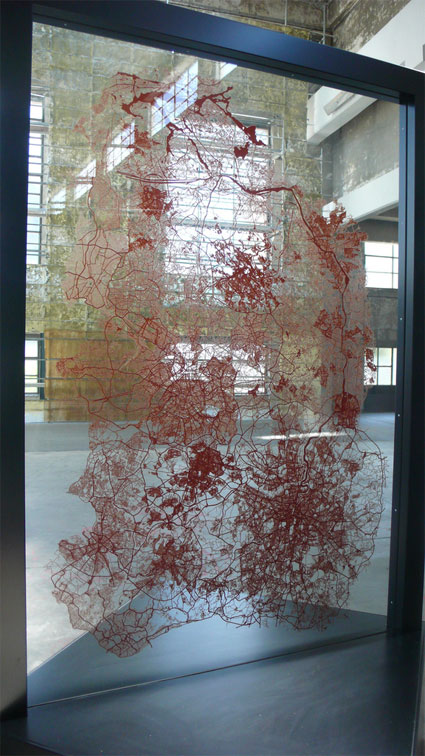
His contribution to the Manifesta biennial is Europolis, a beautifully crafted glass and metal foil panel that raises questions such as ‘What if Europe was condensed into one piece and combined as one cell? What would be left behind as residue?’
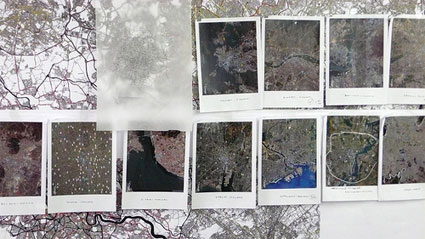 David Adjaye, Europolis, 2008. Image courtesy of Manifesta
David Adjaye, Europolis, 2008. Image courtesy of Manifesta
Adjaye extracted information from the capital cities of the European Union and condensed it into a single entity. The sum of many European cities doesn’t make a European city. These have not been planned; they have evolved over time, through history and war, development, destruction, mixing, migration and changing populations. Adjaye’s work evokes the idea of the city as phenomenon. Its organic form contains all the information about those cities from which it is drawn: material texture, population, time, scale and occupation.
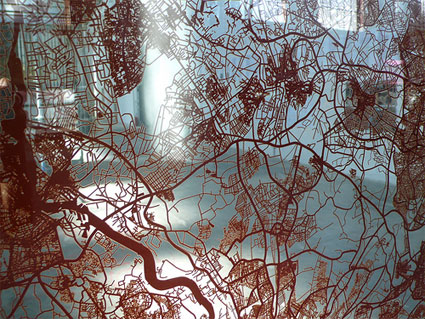
The other rabbit in Manifesta’s magic hat is Piratbyrån (The Bureau of Piracy) who came all the way down from Stockholm to Italy in an old bus. Piratbyrån is best known as the initiator of The Pirate Bay, the world’s largest bit torrent tracker and the subject of a controversial court case.
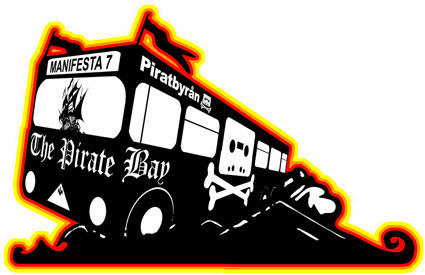 Piratbyrån (The Bureau for Piracy). Please Join The Party, 2008. Image courtesy Manifesta
Piratbyrån (The Bureau for Piracy). Please Join The Party, 2008. Image courtesy Manifesta
The journey doubled as a workshop whose aim was the formulation of a new, collaborative statement based on the group’s experiences of the recent Scandinavian conflicts over copyright. The bus was left behind as part of the exhibition, along with the documentation of Piratbyrån’s work.
I admire the Biennale for having the guts to support the project in a country whose government has recently decided to censor The Pirate Bay. So far the move has been unsuccessful. I guess that among the worries of the head of State is also the suspicion that we’ll use the file-sharing website to enthusiastically download his upcoming CD of Christmas songs.
Unfortunately (for me cuz it means i can’t download the Commissario Montalbano), Colombo-BT is still blocked due to the same measure.
Pirate Bay co-founder Peter Sunde told TorrentFreak: “It kinda shows that we’re more than just a site, that we’re an idea, and that we’re art in ourselves. As I’ve said many times before, we see The Pirate Bay as some sort of ongoing art project/performance.”
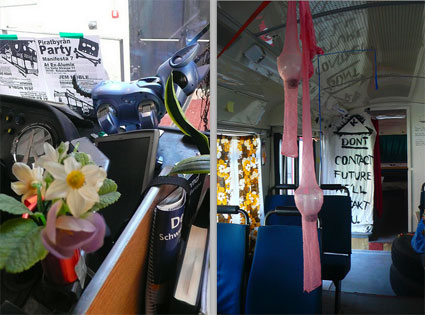 Inside the bus
Inside the bus
There’s of course a torrent of TPB’s road movie.
Manifesta, the itinerant European Biennial of Contemporary Art is hosted this year by the Trentino – South Tyrol Region. It runs until November 2, 2008.
